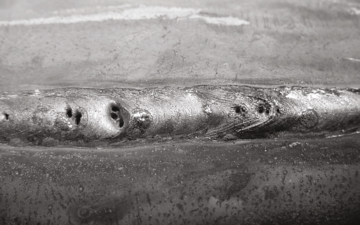The Science Behind Porosity: A Comprehensive Overview for Welders and Fabricators
Understanding the detailed systems behind porosity in welding is important for welders and makers pursuing impeccable workmanship. As metalworkers explore the midsts of this phenomenon, they reveal a world controlled by numerous factors that influence the development of these minuscule voids within welds. From the structure of the base products to the complexities of the welding procedure itself, a plethora of variables conspire to either intensify or alleviate the presence of porosity. In this detailed overview, we will unwind the scientific research behind porosity, exploring its impacts on weld top quality and unveiling progressed techniques for its control. Join us on this journey via the microcosm of welding imperfections, where accuracy meets understanding in the search of flawless welds.
Comprehending Porosity in Welding
FIRST SENTENCE:
Evaluation of porosity in welding discloses crucial insights into the honesty and top quality of the weld joint. Porosity, identified by the existence of tooth cavities or voids within the weld steel, is an usual worry in welding processes. These voids, otherwise properly attended to, can compromise the architectural integrity and mechanical properties of the weld, resulting in potential failings in the completed product.

To detect and evaluate porosity, non-destructive screening methods such as ultrasonic screening or X-ray assessment are typically employed. These strategies enable the identification of internal defects without jeopardizing the integrity of the weld. By assessing the dimension, shape, and circulation of porosity within a weld, welders can make educated choices to enhance their welding processes and attain sounder weld joints.

Aspects Influencing Porosity Formation
The incident of porosity in welding is affected by a myriad of aspects, ranging from gas shielding effectiveness to the complexities of welding specification setups. Welding criteria, including voltage, present, travel rate, and electrode kind, also effect porosity development. The welding strategy employed, such as gas metal arc welding (GMAW) or protected steel arc welding (SMAW), can affect porosity development due to variations in heat distribution and gas insurance coverage - What is Porosity.
Effects of Porosity on Weld Quality
The existence of porosity likewise weakens the weld's resistance to read the article deterioration, as the my explanation caught air or gases within the voids can respond with the surrounding setting, leading to deterioration over time. Additionally, porosity can prevent the weld's capability to withstand stress or effect, further endangering the overall top quality and dependability of the welded framework. In crucial applications such as aerospace, automotive, or architectural building and constructions, where security and longevity are vital, the harmful impacts of porosity on weld top quality can have serious consequences, highlighting the importance of decreasing porosity through appropriate welding strategies and procedures.
Techniques to Lessen Porosity
To enhance the quality of bonded joints and make sure structural stability, welders and fabricators utilize specific methods focused on minimizing the development of spaces and dental caries within the material during the welding procedure. One effective technique to decrease porosity is to guarantee correct material preparation. This consists of thorough cleaning of the base steel to remove any type of impurities such as oil, oil, or wetness that can add to porosity formation. Furthermore, making use of the appropriate welding specifications, such as the right voltage, existing, and travel speed, is vital in preventing porosity. Preserving a constant arc size and angle throughout welding also helps minimize the chance of porosity.

Making use of the suitable welding strategy, such as back-stepping or using a weaving movement, can also aid distribute warm evenly and decrease the opportunities of porosity formation. By executing these strategies, welders can efficiently minimize porosity and create top quality welded joints.

Advanced Solutions for Porosity Control
Applying advanced technologies and ingenious methods plays a crucial function in achieving remarkable control over porosity in welding processes. Furthermore, employing sophisticated welding techniques such as pulsed MIG welding or customized atmosphere welding can also assist minimize porosity issues.
An additional sophisticated option entails making use of advanced welding devices. For circumstances, utilizing devices with integrated attributes like waveform control and advanced source of power can enhance weld high quality and lower porosity risks. In addition, the implementation of automated welding systems with exact control over criteria can significantly reduce porosity flaws.
Additionally, integrating sophisticated monitoring and inspection technologies such as real-time X-ray imaging or automated ultrasonic screening can help in identifying porosity early in the welding process, allowing for immediate restorative actions. Generally, integrating these sophisticated services can significantly improve porosity control and enhance the overall quality helpful hints of welded parts.
Final Thought
Finally, comprehending the science behind porosity in welding is vital for welders and fabricators to produce high-grade welds. By determining the aspects affecting porosity formation and executing methods to lessen it, welders can improve the total weld high quality. Advanced solutions for porosity control can further enhance the welding procedure and make certain a solid and trustworthy weld. It is essential for welders to continually inform themselves on porosity and apply ideal methods to achieve optimal outcomes.